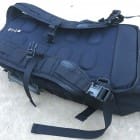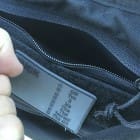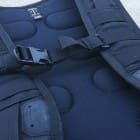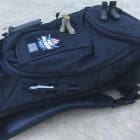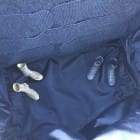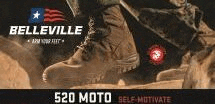Beyond Benchmarks: Why Tactical Shooters Plateau
I felt like a rockstar the first time I achieved a sub second draw from the holster. In my best Maverick from Top Gun impersonation, I punched my fist in the air while delivering a controlled grin at my GoPro. I looked back at my shot timer and welcomed myself into the pantheon of top tier marksman. What happened afterwards immediately bumped me back down onto the plateau that I belonged.
I fired another 50 single shots from the holster and failed to break one second. No problem, this is easily fixed by shooting another box of ammo, then another…. $50 later and I’m not even burning in anywhere near 1.10 seconds.
Every shooter plateaus in performance and we often delay growth by assuming we can solve our problem by shooting more ammo, finding a better piece of gear, or seeking out more pro-tips on YouTube. Although these behaviors may facilitate some progress, collectively they waste time and fail to address the root of the problem in the development of maintaining a performance-based training mindset.
Mindset is deterred by ignoring general information, focusing on specifics and valuing benchmarks (e.g. sub 1 second draw) as outcomes instead of methods. During training, this manifests as misinterpretation of a single outstanding performance that inappropriately calibrates expectations to an assumed level of expertise (e.g. inconsistent sub second draw). Similarly, valuing benchmarks as outcomes instead of methods can distract from improving overall skills development. This is best demonstrated by a performance phenomena known as “range roboting”.
We “range robot” by executing a high volume of repetitions on a single exercise, but only narrowly increase the scope of our overall performance. For example, shooting an entire box of ammo at the El Prez drill means nothing, if, when the drill is performed in reverse, our skills regress back to mediocre. The solution to the problem is not expending another box of ammo while performing El Prez in reverse. Instead, we must look beyond benchmarks and focus on mindset.
Although benchmarks are important qualifiers in measuring mechanical performance, they are not always a good indicator of how skills transfer to the real world. For instance, shooting a carbine bolt-lock reload exercise for speed can cause shooters to overlook the importance of learning the subtle feeling of a bolt that has not returned to battery. One should never argue that speed is unimportant, but when speed is performed hastily, it is not always the best metric for building well-rounded tactical abilities.
A key activity in developing a performance-based mindset is measuring consistency. “Slow is smooth… and smooth is fast” or the alteration of “slow is slow… fast is fast,” regardless of which version of the quote is more en vogue, we should endorse behavior that encourages relaxed skills execution. This doesn’t mean excluding benchmarks in measuring ability, however, benchmarks should be incorporated during training with the understanding that there is a difference between learning to perform a task consistently versus going as fast as you can. This is most important for shooters that are constantly outrunning their headlights with the assumption that speed is corollary to performance. Scenario based exercises immediately surface this fallacy among other performance inabilities because these shooters are required to combine multiple skill sets, most of which are mental.
A performance based training mindset can be developed through several methods, and the most cost efficient technique is adopting the “less is more” mentality with ammo expenditure. If I exceed 300 rounds per training session, I encourage going through the motions on certain exercises. Reducing the total number of rounds fired forces me to budget my efforts and decreases opportunities for complacency in which I chase a benchmark that cannot be performed with any real consistency.
Visualization is another key activity that allows us to think through different scenarios and develop a performance-based mindset. In the conceptual and developmental phases of tactical courses, some students demand specific sets of rules that need to be followed in order to win a gunfight. If the threat does X, I respond with Y. Tactical encounters are not linear and this is why instructors place greater emphasis on well-rounded skills development instead of excellence in a single benchmark.
A month after my first sub second flat range draw, I trained to the point that I was able to meet the benchmark with consistency by focusing on a single outcome. This required a lot of ammo, dry-fire practice, and neglecting to develop other skills that are essential to being a tactical marksman. Speed is important, but it may be an overvalued metric if the more necessary outcome is being familiar with drawing from concealment from inside a vehicle with a support hand.

Aaron Barruga is a Special Forces veteran and founder at Guerrilla Approach LLC. He teaches vehicle tactics and speed shooting for tactical marksmanship.
www.guerrillaapproach.com
www.facebook.com/guerrillaapproach
www.instagram.com/guerrilla_approach
Gunfighter Moment is a weekly feature brought to you by Bravo Company USA. Bravo Company is home of the Gunfighters, and each week they bring us a different trainer to offer some words of wisdom.








